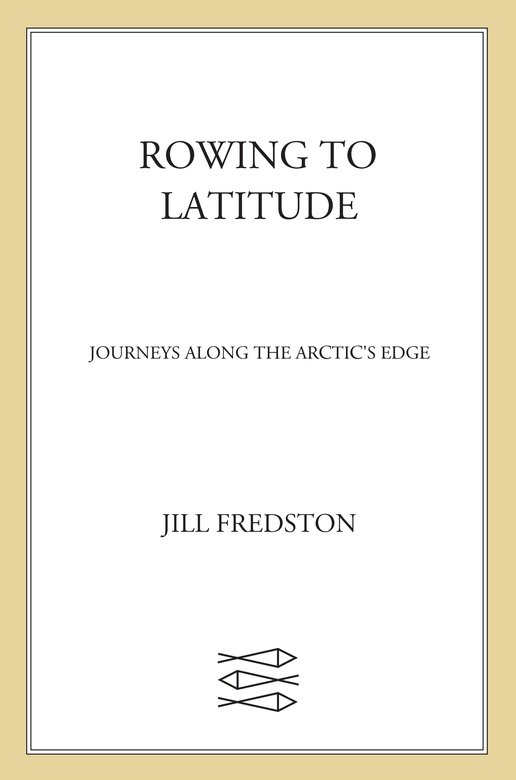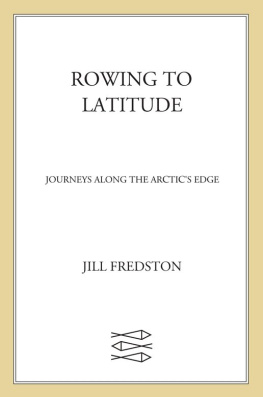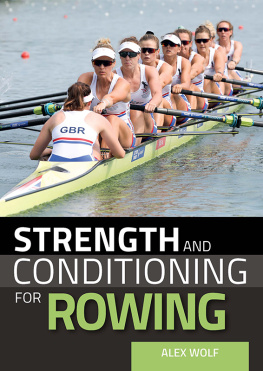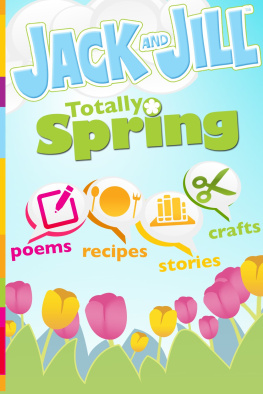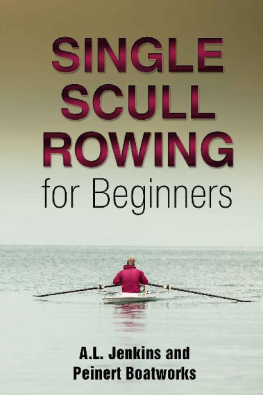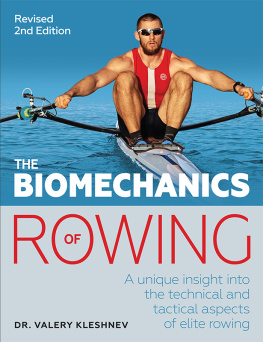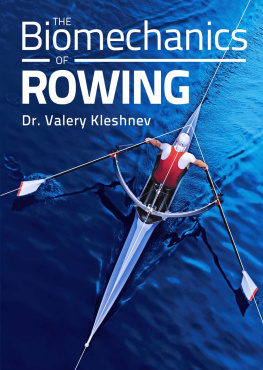ONE OF MY FAVORITE childrens stories is Holling Clancy Hollings Paddle-to-the-Sea, a book I rediscovered after more than two decades, when my future husband pulled out his own cherished, tattered copy. In the book, a canoe and paddler carved by an Indian boy out of a small piece of pine are helped from the headwaters of the Great Lakes all the way to the Atlantic Ocean by a cast of unlikely characters. Since my first reading, Ive undertaken my own share of long boat journeys, but none of them, including those that had me dragging boats across Arctic ice or crashing in through mountainous surf, have felt as ruggedly impossible as writing did at times. This book was brought to the moment of launch by the vital help of family and friendsboth new and old.
Thanks to my agent, Julie Rubenstein of Linda Chester Agency, for finding me a safe harbor at North Point Press/Farrar,Straus and Giroux and introducing me to my editor, Rebecca Saletan. I am grateful for Beckys extraordinary insight, frustrating talent to see through even my most clever ruses, relentlessness in making me think, and willingness to invest so much time in a rookie. Thanks as well to her assistant, Katrin Wilde, for her gentle kindness, and to all the hidden hands that have guided this manuscript to completion.
This might be the only paragraph in this book that my friend Natalie Phillips hasnt read. Weve been through the three Cschildbirth, cancer, and chapter revisionstogether. She worried that I might hate her for her honesty (and sometimes I did), but I remain awed by her wisdom, grace, and faith. Alaska is so far from anywhere that friends become family. In addition to Natalie, I owe huge hugs to my other Alaskan sistersNan Elliot, Janis Fleischman, Jennifer Johnston, and Ellen Toll. And since I never had a brother, Ill claim Mike Davidson for his contagious optimism. I am also appreciative of Lewis Schnapers discerning eye as a reader. Throughout the process of creating this book, I turned for advice or information to many I didnt know, including Edward Burlingame and Kate Kelly Schweitzer, and always found it willingly given.
Thanks to Gunnar and Alice Knapp for providing a cabin in the woods, and to Michelle and Michael OLeary for lending me their wildlife-rich retreat by the sea. Both were places of little distraction and great inspiration. Bodie the boat dog deserves extra treats for keeping me loyal company and swiping my hands off the keyboard, reminding me daily when it was time to go for a hike or a row.
And then there are my father and my mother, Arthur and Elinor Fredston. It is not possible for me to feel luckier in having parents who so exemplify the essence of life. I am also beholden to my sistersSusan Fredston-Hermann and Dale Fredstonand their families; my brother-in-law Jon Bullard did everything short of installing a hot line next to his bed to handle my computer emergencies. From the bottom of my wicked stepmothers heart, I thank Lahde, Sunna, and Turi Fesler for their enthusiasm and caring.
If I thanked everyone who has made our journeys possible, safer, or more enjoyable, these acknowledgments could easily be longer than the book itself. I take a deep bow to all of you. Special thanks are due Lars Christiansen, Robert Dearsley, Erik and Gerd Hestnes, Monica Kristensen Sols, Ole and Anne Kristiansen, and the families of John Haugen, Krister Kristensen, and Ronald Toppe in Norway; Sarah Webb in Labrador; and Earl Ramsey and the Fleischer family in Greenland. I am indebted to Anders Bjrck of Scandinavian Airlines Systems for huge logistical help, to Gary Piantedosi for building rowing frames that have kept us rolling smoothly, and to Mike Neckar and the late Arthur Martin for going the extra mile in designing boats that have kept us afloat.
I have saved the last acknowledgment for my husband, Doug Fesler. Without him, I cannot imagine the journeys. With him, I am often flooded by the same sensation I get rowing across a calm fjord on a sunny day, when my boat is flying and my mind is in my heart.
I wish to speak a word for nature, for absolute freedom and wildness.
Henry David Thoreau, Walking
FOR YEARS my husband, Doug Fesler, and I have led a double life. In the winter, we work together as avalanche specialists. Then, with the lighter days of summer, we disappear (though my mother hates that word) on three-to-five-month-long wilderness rowing and kayaking trips. Somehow, more than twenty thousand miles have slid under our blades, a function of time and repetitive motion rather than undue strength or bravery.
Once, far down the Yukon River, which begins in western Canada and cleaves Alaska, an old Athabascan subsistence fisherman hailed us from his aluminum skiff. In keeping with local custom, he was in no hurry to talk, preferring to drift in silence while his eyes appraised us through a poker mask of wrinkles. In time he asked, Where you come from? And a minute or two later, Where you go? More silence, while he digested our answers. Eventually he pronounced, You must be plenty rich tospend the summer paddling. Doug leaned back, grinned, and replied without a trace of the awkwardness I feared was lit in neon upon my face, If we were rich, wed have a boat with a motor like yours.
Though we are far from rich and occasionally prey to bouts of motor envy, paddling is our preferred mode of travel, at least until our joints completely disintegrate. It allows us to tickle the shoreline, and opens our senses to the rhythms around us. We are more attuned to our surroundings when we are moving at only five miles per hour, maybe six on a good day. With hours to think, it is also a little harder to escape from ourselves.
We always travel in two boats. This gives us an extra margin of safety and allows us to carry several months worth of supplies. More important, such separation keeps us from hating each other. It would take better people than we are to share a small boat day after day and then to crawl into the same tent night after night, for weeks on end. Until 1994, there was also the practical consideration that we propelled our boats differently. I am firmly committed to rowing, which does not allow any part of my body to ride for free. My legs, when confined by the spray skirt of a kayak, instantly begin to twitch, and my arms feel cast in bronze. Doug favored kayaking for the first thirteen thousand of the miles we journeyed together; oddly, he thought it was important to see where he was going. But at last he converted, reluctantly acknowledging the greater efficiency and speed afforded by a sliding seat and long oars.
Onlookers frequently remark that they would love to do similar trips if only they had the time, or the necessary experience. No matter how often Ive heard these comments, they still give me pause. As for time, we give it a high priority; if we wait too long, we will be unable to row. And weve gained the experience by doing, stroke by stroke.
Most often, though, people question why we undertake these trips at all. They might as well ask us why we breathe or eat. Our journeys are food for our spirits, clean air for our souls. We dont care if they are firsts or farthests; we dont seek sponsors. They are neither a vacation nor an escape, they are a way of life.
On a trip down the Yukon River in 1987, we made a habit of asking Native people who lived along its shores how far up- and downriver they had traveled. Usually they had ranged less than fifty miles in either directionsome a little farther in these days of snowmachines and skiffs with hefty outboard engines. Just over halfway down the river, however, at about the twelve-hundred-mile mark, we met Uncle Al, an Athabascan elder. He was slightly stooped with age but straightened when he answered, brown eyes aglow. As a young man, he said, he had traveled by canoe all the way to the headwater lakes, and had also followed the river a thousand miles from his home to the sea. When we asked why, he looked puzzled. I had to know where the river came from and where it was going. We give a version of the same answer. We do these trips because we need to. The world of phones, computers, and deadlines cannot compare with singing birds, breaching whales, magnificent light shows, and crackling ice.
